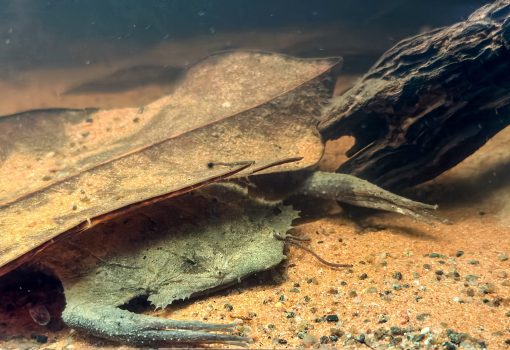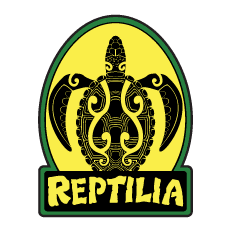Pipa Pipa
Common Name: Suriname Toad or Pipa Pipa
Scientific Name: Pipa pipa
Names: N/A
Locations: Whitby & Vaughan

Diet
The Suriname Toad primarily feeds on small invertebrates such as insects, crustaceans, and small aquatic invertebrates.
Average lifespan
In captivity, Suriname Toads can live up to 10 to 15 years with proper care.
Size
Suriname Toads have flattened bodies and can grow to sizes ranging from about 10 to 20 centimeters (4 to 8 inches) in length.
Weight
Adult Suriname Toads typically weigh around 150 to 250 grams (5.3 to 8.8 ounces).
About
The Suriname Toad is native to South America, particularly found in the Amazon Basin and surrounding regions. They inhabit slow-moving or stagnant waters such as ponds, marshes, and flooded forests.
Size and behavior
Suriname Toads have a unique appearance characterized by their flattened bodies, broad heads, and distinctively shaped limbs. They are adapted for a primarily aquatic lifestyle and are excellent swimmers. Their behavior is notably unusual during reproduction, as the female carries her eggs on her back until they hatch, at which point the young emerge as fully formed toads.
Diet and nutrition
Suriname Toads are primarily carnivorous and feed on a variety of small invertebrates found in their aquatic habitats. They use their specialized mouthparts to suction in prey items, which they swallow whole.
Conservation status
The conservation status of the Suriname Toad is currently of least concern. While they may face localized threats from habitat destruction, pollution, and overexploitation in some areas, they are still relatively common in their native range. However, like many amphibians, they may be impacted by habitat loss and environmental degradation caused by human activities.
Fun fact
One of the most fascinating aspects of the Suriname Toad’s biology is its unique method of reproduction. During mating, the male fertilizes the eggs on the female’s back, where they become embedded in her skin. Over time, the eggs develop into fully formed toads, which then emerge from the female’s skin as fully functional juveniles. This unusual method of reproduction is known as “dermal incubation” and is a rare phenomenon in the animal kingdom.
Call or visit your local Reptilia Facility to learn how you can adopt one of these amazing reptiles.










